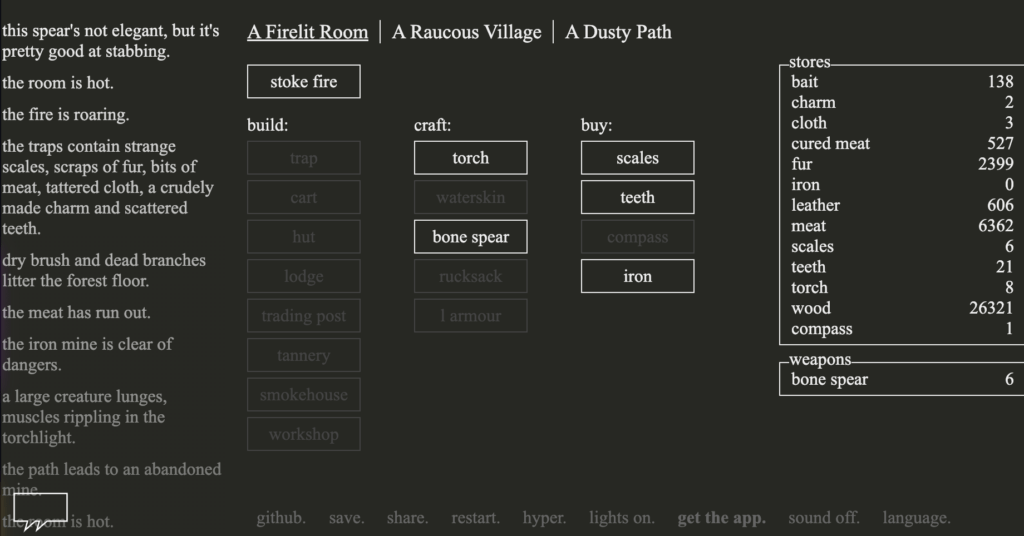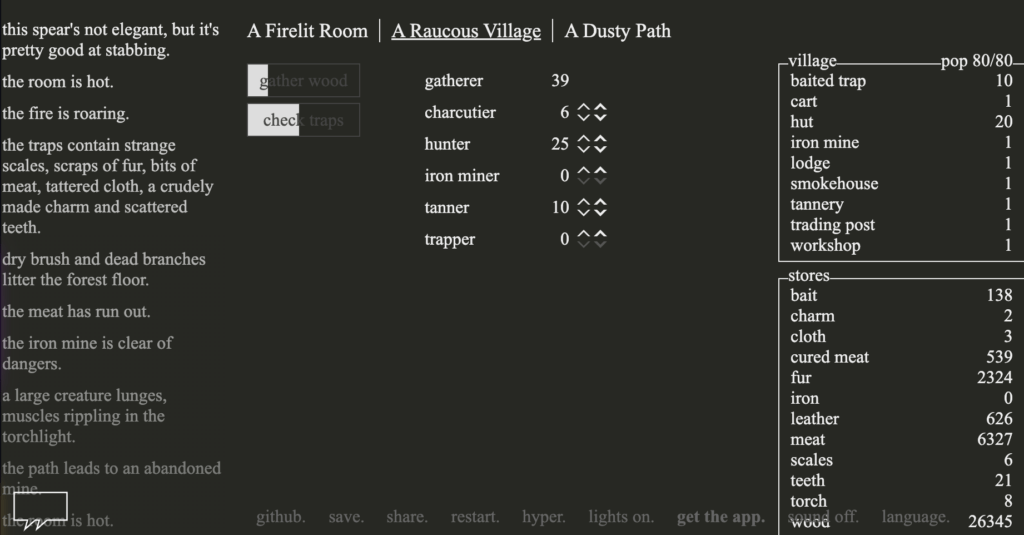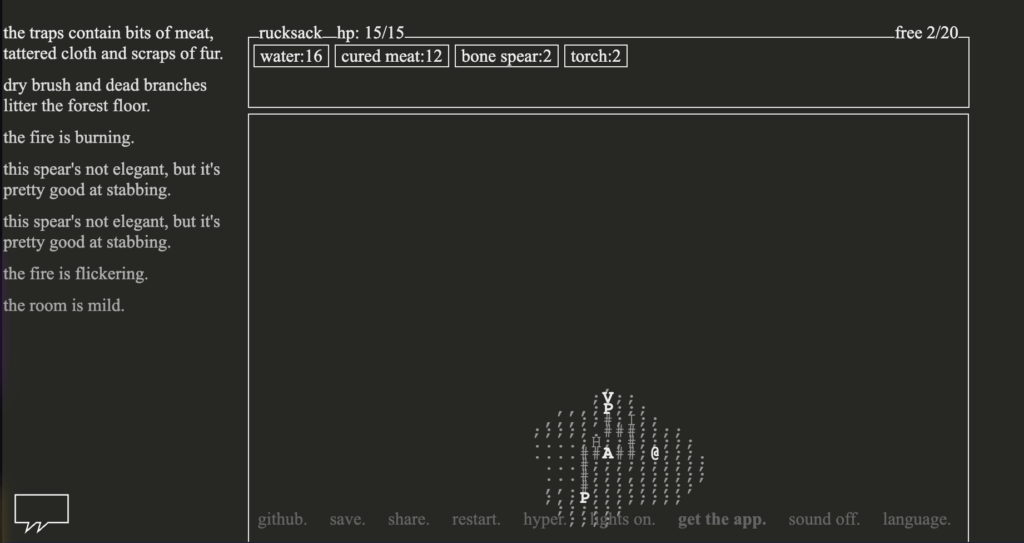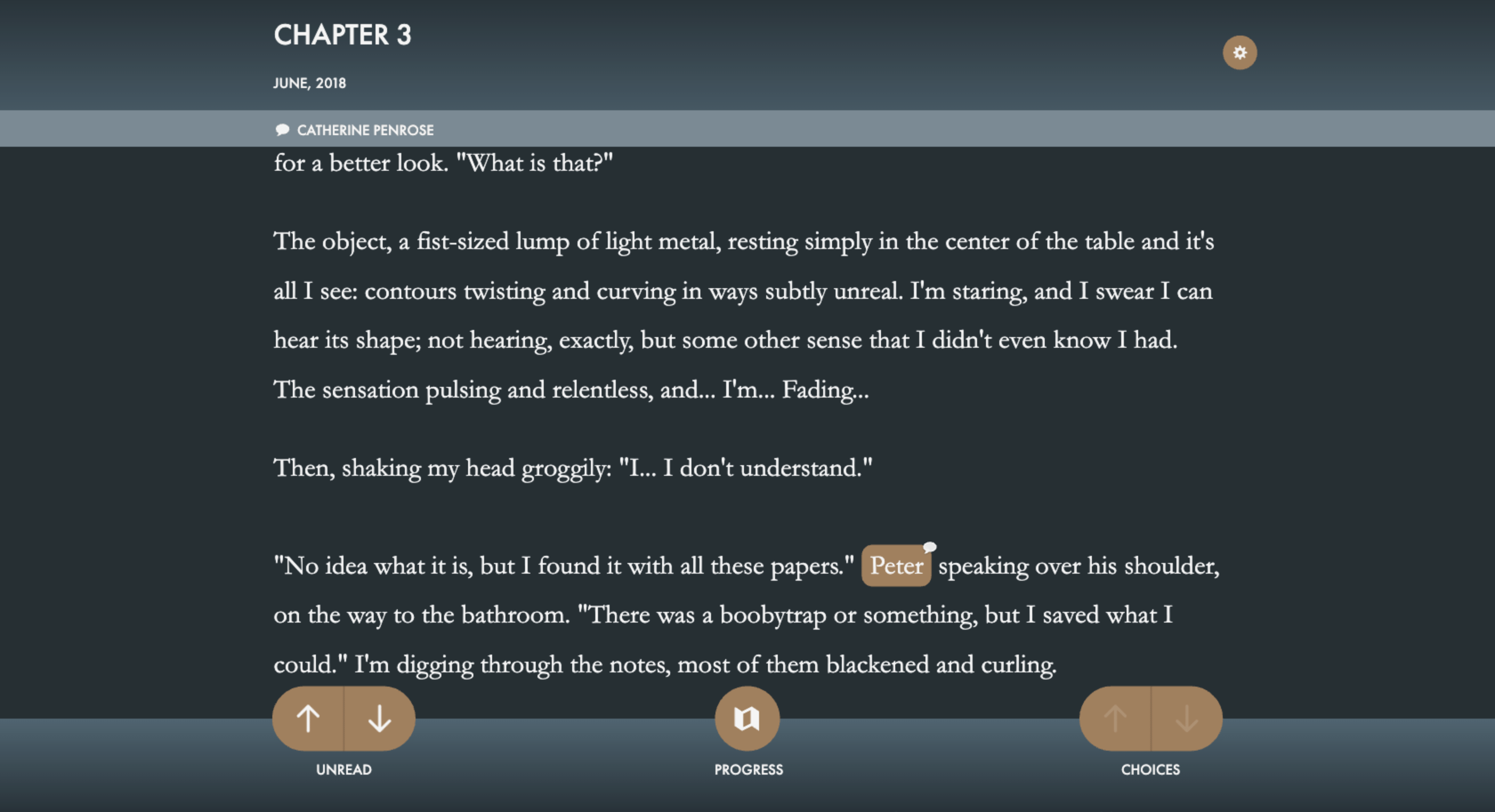This week, I played A Dark Room created by doublespeak games. It’s a “minimalist text adventure” where through simple buttons, immersive ambient sound, and hunter-gatherer civilization-level mechanics, you interact with the world around you, attempting to understand the world you’re in. As you gather more resources, you’re able to expand your settlement, unlock new items, and begin embarking on quests around your settlement. To add in action, you’re sometimes prompted with actions that have occurred, such as a nomad appearing, a monster being heard, or hallucinations setting in — the latter of which opens up a new tab into a choose-your-own-adventure chapter-based story.
The game is targeted for relatively casual gamers, but gamers nonetheless. Most that would see this game would call it stupid at first glance, but for gamers not looking for a super serious or time-intensive game, it’s a relaxing, interesting world to explore.
The game has both loops and arcs. Loops are found in the hunter-gatherer nature of the game. As you click buttons, you gather more wood. Once you get enough wood, you unlock the ability to buy traps, which allows you to get fur and meat. This progression continues through a similar nature as the game progresses — getting more resources means buying new things which unlocks new things to farm, and so on. This mechanic is what keeps the game progressing.

The main purchasing screen where players use their resources to take actions.
Arcs are found once you finally are able to leave the settlement and explore around you. Now, every time you leave is a new narrative with surprises to pop-up, places to explore, and monsters to kill. This eventually devolves into a similar loop as these quests feel more mundane and just contribute to the hoarding goal of the game, but nonetheless they add variety to the game and drive more of a narrative than other aspects of it.

Players gather their resources by assigning villagers to tasks and clicking buttons.


Players explore “a dusty path” where they can explore neighboring towns, abandoned mines, and fight monsters through text-based combat.
The game’s setting is in a hyperminimalist wilderness, controlling your goals for the game and limiting the information you’re given at any one time. The story is delivered entirely through text, some of which comes through pop-ups, and some comes in response to actions you take. The minimalist architecture of this setting adds to the mystery of the game as you try to understand what the point of the game is and who you are, getting incredibly small pieces of information as you progress.
Ultimately, I thought the game was relatively enjoyable and one that I kept playing, even though I told myself that it was a relatively stupid game. The main aesthetics of the game are in the sensation from sound and especially present in the exploratory nature of the game. The stripped-back gameplay creates a casual setting where the narrative is told through text, allowing you time to imagine the setting yourself. While this may not happen for every player, to me, the most fun part of the game is the lack of explicit imagery or descriptions, instead letting you fill in the gaps of the story, theorize about the lore and future of the world, and imagine what it looks like. And, with so few things to do but farm and explore, you’re pushed to continue progressing onto new areas of the map, meaning your primary objective ends up being to flesh out the narrative.
For me, the game was something I’d never imagined would be as enjoyable as it was. Through sound design and narrative, A Dark Room essentially rebranded a game like Cookie Clicker into something genuinely interesting, providing some inspiration for how my group can create fun without needing high budget graphics or physics engines. The game did fall short in a few places, such as through at-times slow pacing or when narrative was pushed to the side, letting players largely ignore it in certain parts of the game, but ultimately the game designers made an environment where players are immersed in a world that’s part-theirs, part-the-designers’ with addictive loops and engaging narrative arcs. 
The side narrative that appears mid-way through the game, opening up a separative tab.



